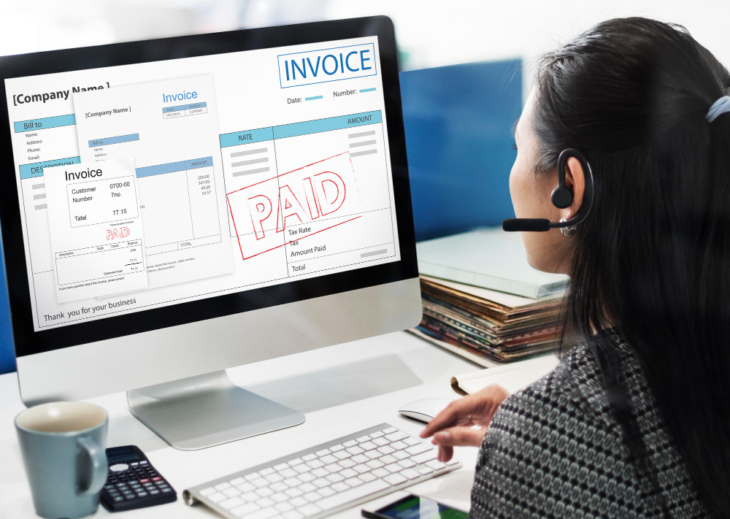Greetings! I'm Aneesh Sreedharan, CEO of 2Hats Logic Solutions. At 2Hats Logic Solutions, we are dedicated to providing technical expertise and resolving your concerns in the world of technology. Our blog page serves as a resource where we share insights and experiences, offering valuable perspectives on your queries.

Is your finance team spending hours matching invoices, hunting down discrepancies, and delaying payments? You’re not alone.
For businesses handling dozens or hundreds of invoices monthly, reconciliation remains one of the most frustrating and time-consuming financial processes. It introduces errors and diverts resources from strategic activities.
Auto invoice reconciliation isn’t just a buzzword, it’s transforming financial operations. This guide covers what it is, how it works, and why adopting it now is a smart financial move.
What is Auto Invoice Reconciliation?
Auto invoice reconciliation is a way for businesses to automatically check if the money they receive matches the invoices they send. Instead of manually comparing invoices and payments, a smart system does it for them.
It works by using AI and machine learning, to find matches between invoices, payments, and bank transactions. If everything adds up correctly, the system confirms the payment. If something doesn’t match, it flags the issue for review.
This saves time, reduces human mistakes, and helps businesses keep their financial records accurate without extra effort.
How Auto Invoice Reconciliation Works
Ever wondered how businesses match invoices and payments without drowning in spreadsheets? Auto invoice reconciliation automates the entire process, reducing errors, saving time, and improving cash flow visibility. Here’s how it works:
1. Automated Data Extraction & Matching
Manual data entry is slow, repetitive, and prone to errors. Businesses often struggle to match invoices with payments accurately. Automation solves this by extracting invoice and payment data from multiple sources.
- Invoices from emails, PDFs, or ERP systems.
- Bank statements synced in real-time with financial institutions.
- Payment gateways such as Stripe, PayPal, and direct bank transfers.
Advanced matching algorithms compare invoice numbers, payment references, amounts, and due dates. If a perfect match is found, the system automatically reconciles the transaction. For partial payments or overpayments, the tool flags them for further review, ensuring financial accuracy.
2. Smart Error Detection & Fraud Prevention
Errors in financial transactions can lead to major discrepancies in cash flow and reporting. Automated reconciliation systems use AI and machine learning to detect:
- Duplicate payments that could otherwise go unnoticed.
- Mismatched transactions due to incorrect invoice details.
- Fraudulent activities, such as altered payment amounts or unauthorised account usage.
By instantly flagging anomalies, businesses can take corrective action before errors escalate, ensuring compliance and protecting against financial fraud.
3. Intelligent Approval & Exception Handling Workflow
Not all transactions match perfectly, and that’s where intelligent workflows come into play. If discrepancies arise, the system automatically triggers alerts and routes them through predefined approval hierarchies. For instance:
- A finance team member receives an alert about an invoice mismatch.
- The system provides supporting documents, such as scanned invoices and payment confirmations.
- The manager can approve, reject, or request additional information, all within the platform.
This structured approach ensures that discrepancies are resolved efficiently while maintaining full audit trails for compliance purposes.
4. Multi-Currency & Tax Compliance Handling
For global businesses, handling multi-currencies and tax regulations manually is a nightmare. Automated reconciliation tools streamline this by:
- Automatically converting currencies based on real-time exchange rates.
- Applying correct tax rates (VAT, GST, sales tax) based on location.
- Reconciling cross-border transactions, ensuring accurate reporting in multiple regions.
This eliminates the risk of miscalculations and ensures compliance with local financial regulations, reducing tax-related penalties.
5. Real-Time Reporting & Dashboard Insights
One of the major advantages of automation is the ability to access real-time financial insights. Instead of waiting for month-end reports, businesses can:
- Monitor outstanding invoices and pending payments on a centralised dashboard.
- Analyse cash flow trends and payment patterns.
- Generate instant, audit-ready reports for tax filings, compliance checks, and financial forecasting.
These insights empower CFOs and finance teams to make data-driven decisions and optimise working capital.
6. Integration with Accounting & ERP Systems
Automated reconciliation tools don’t operate in isolation, they integrate seamlessly with existing accounting and ERP platforms such as:
- SAP, Oracle, NetSuite for enterprise-level financial management.
- QuickBooks, Xero, FreshBooks for small and mid-sized businesses.
- Custom APIs that allow integration with proprietary financial software.
By synchronising financial data across platforms, businesses eliminate the need for manual data entry and ensure consistency in financial reporting.
Simplify your invoice reconciliation.
Advantages of Automated Invoice Reconciliation
Investing in automated invoice reconciliation isn’t just about reducing manual work. It’s a strategic move that delivers measurable financial and operational benefits. Understanding the return on investment (ROI) can help businesses justify automation and drive long-term efficiency.
Cost Comparison: Manual vs. Automated
Manual reconciliation requires significant time and labour. Finance teams must collect invoices, verify payments, cross-check bank transactions, and resolve discrepancies manually. This process is slow, error-prone, and expensive.
Automation reduces labour costs, eliminates costly errors, and minimises late payment penalties. By reducing manual reconciliation, businesses can save thousands of dollars annually.
Efficiency Gains & Resource Allocation
With automation, finance teams spend less time on repetitive tasks and more on strategic financial planning. Automated reconciliation ensures real-time updates, reduces bottlenecks, and allows the team to focus on value-added activities like forecasting and optimisation. Businesses can operate more efficiently while reallocating resources to high-impact areas.
Pro Tip: Even the best tools need skilled users. Provide training to ensure your team understands the system and can handle exceptions efficiently.
How to Measure Success with KPIs
To evaluate the impact of automation, businesses should track key performance indicators (KPIs) such as:
- Reconciliation Time Reduction: Compare the time taken for manual vs. automated reconciliation.
- Error Rate Decrease: Measure the reduction in discrepancies and financial inaccuracies.
- Cost Savings: Assess savings from reduced labour costs and fewer penalties due to missed payments.
- Fraud Detection Rate: Track the number of flagged fraudulent transactions.
- Cash Flow Visibility: Measure improvements in real-time financial insights and forecasting accuracy.
Choosing the Right Solution for Your Business
The right solution should streamline reconciliation and ensure compliance, scalability, and seamless integration with existing systems.
- Scalability
As businesses grow, transaction volumes increase. A good reconciliation tool should handle high transaction loads without compromising speed or accuracy.
Look for a solution that scales with your business needs, whether you’re processing hundreds or millions of invoices.
- Compliance & Security
Financial data must meet industry compliance standards such as GAAP, IFRS, SOX, and PCI DSS. Automated tools should offer built-in compliance checks, secure data handling, and audit-ready reporting to meet regulatory requirements.
- Integrations
A reconciliation tool should integrate with accounting software, ERP systems, and payment gateways. Common integrations include:
- ERP systems: SAP, Oracle, NetSuite
- Accounting software: QuickBooks, Xero, FreshBooks
- Payment gateways: Stripe, PayPal, Square
- Bank feeds: Direct integration with financial institutions for real-time transaction updates
- AI & Machine Learning Capabilities
Advanced tools use AI to detect errors, predict patterns, and improve accuracy over time. Features like smart matching, anomaly detection, and predictive analytics enhance efficiency and reduce manual intervention.
Overview of Popular Tools
- Stripe: Ideal for businesses that process a high volume of online transactions, offering automated reconciliation with real-time payment tracking.
- Spendesk: Designed for finance teams managing company expenses, invoice reconciliation, and spend approvals in one place.
- Resolve: A B2B payments and credit management solution with automated invoice tracking and reconciliation features.
- FloQast: Built for accounting teams, offering automation for financial close processes, reconciliation, and compliance tracking.
- BlackLine: Enterprise-grade software for automated reconciliation, audit trails, and financial reporting.
Common Pitfalls to Avoid
Businesses often face challenges when implementing automation. Avoid these mistakes:
- Lack of integration: Ensure the reconciliation tool integrates smoothly with accounting software, payment gateways, and ERP systems.
- Ignoring exception handling: Not all transactions will match perfectly. Set up workflows to manage disputes, partial payments, and missing data.
- Overlooking compliance: Verify that the solution meets financial regulations, such as tax compliance and data security standards.
- Failure to monitor performance: Regularly track key metrics to ensure the system is improving efficiency and accuracy.
By following these best practices, businesses can maximise the benefits of automated invoice reconciliation, reducing errors, saving time, and improving financial accuracy.
Conclusion
The message is clear: businesses still relying on manual invoice reconciliation are leaving money on the table. Automated solutions deliver reduced processing costs, faster payment cycles, fewer errors, stronger fraud protection, and free your finance team to focus on strategic initiatives.Ready to transform your invoice reconciliation process but not sure where to start? Partner with 2Hats Logic.
FAQ
What is automated invoice reconciliation?
Automated invoice reconciliation is a technology-driven process that matches invoices with corresponding payments, purchase orders, and bank transactions. It reduces manual effort, increases accuracy, and improves financial efficiency.
How does automated reconciliation work?
It extracts data from invoices, payment gateways, and bank statements, then uses AI and rule-based algorithms to match transactions. If discrepancies arise, it flags them for review or approval.
Can automated reconciliation handle multiple currencies and tax regulations?
Yes, advanced tools automatically convert currencies, apply appropriate tax rates, and ensure compliance with regional financial laws.
What factors should businesses consider when choosing a reconciliation tool?
Key factors include scalability, compliance, integration with accounting software, AI capabilities, and ease of use.

Related Articles






